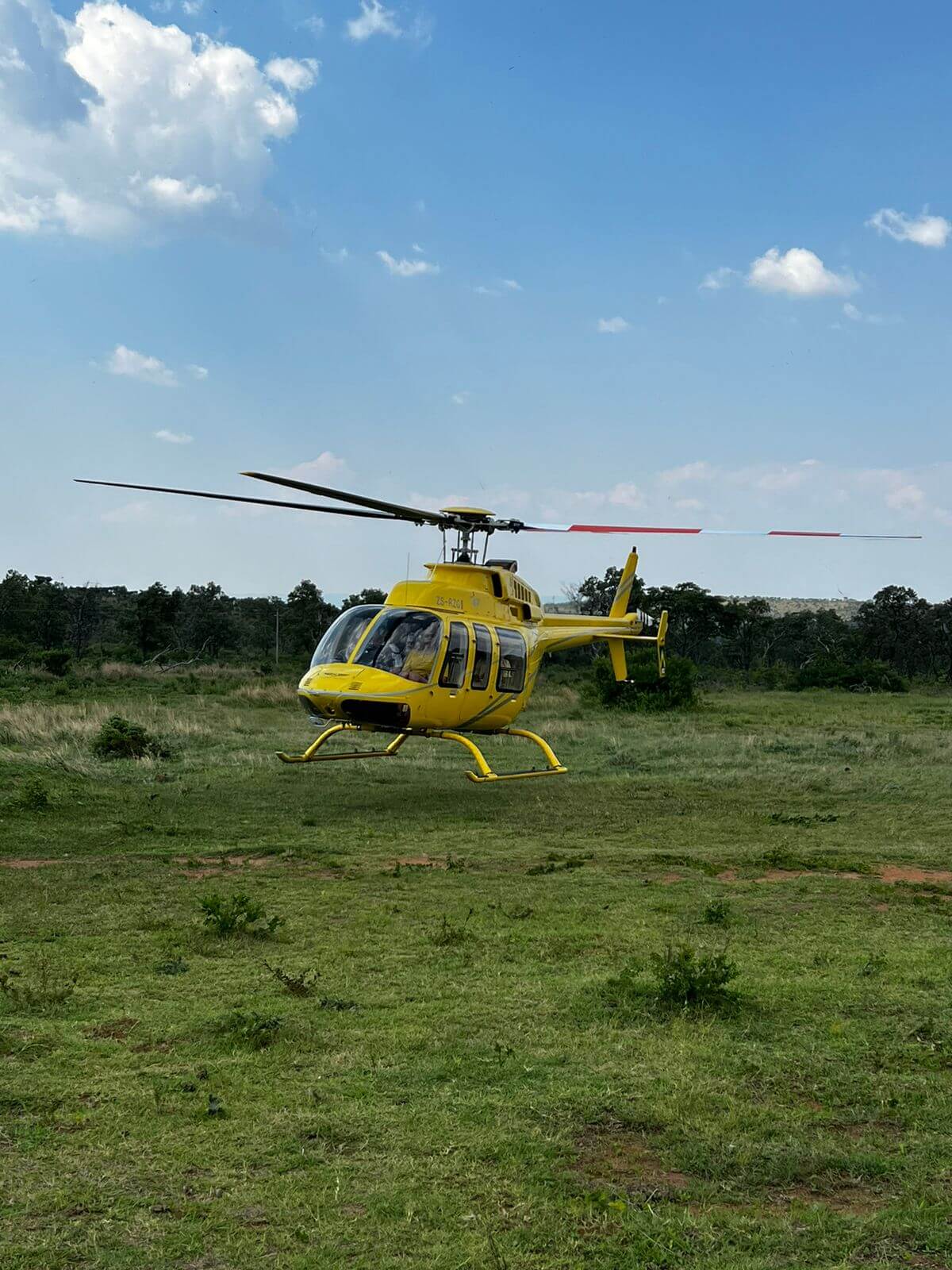
Did you know that as the demands on modern agriculture continue to grow so does the use of aircraft in agriculture. The importance of leveraging innovative technologies to overcome challenges and maximise efficiency has grown and extended to the use of aircraft like helicopters and other aircraft. Among these tools of progress, helicopters and aircraft stand out as versatile assets, revolutionising the way we cultivate our crops and protect our lands. From firefighting to precision agriculture, their applications are as diverse as the fields they serve.
We thought we would unpack just what services we can offer at MCC in the agricultural arena. Not only can we fly you to your next meeting, or to NAMPO each year, but, our aircraft can be used within the realm itself. We broke down what we can do, and how you can make use of our services in your business. Let’s get started.
Heli-Hack: Tackling Invasive Alien Vegetation
Heli-hacking is a vegetation mission undertaken by skilled mountaineers and tree surgeons. Strapped together and slung in threes beneath a helicopter and flown to inaccessible mountain slopes, these courageous individuals risk their lives to eliminate invasive alien trees.
Invasive alien trees pose a significant threat to native ecosystems, outcompeting indigenous vegetation and disrupting delicate ecological balances. Heli-hackers make use of chainsaws to remove these invasive species, restoring biodiversity and preserving the integrity of natural habitats.
Frost Protection: Nurturing Crops from Above
When temperatures plummet and frost threatens delicate crops, helicopters emerge as unlikely heroes. By hovering over fields and orchards, these aerial guardians create a layer of warm air, effectively shielding plants from the damaging effects of freezing temperatures.
This innovative approach to frost protection not only safeguards agriculture but also ensures a consistent supply of fresh produce for consumers worldwide.
Surveying: Gaining a Bird’s-Eye View
From monitoring crop health to assessing soil conditions, aerial surveys conducted by helicopters and aircraft offer invaluable insights into the state of agricultural landscapes. Equipped with advanced imaging technology, these airborne platforms capture high-resolution images and data, allowing farmers to make data-driven decisions regarding irrigation, pest control, and crop rotation.
By identifying potential issues early on, farmers can take proactive measures to optimise yields and mitigate risks.
Slinging: Lifting the Heavy Load
When it comes to agriculture logistics, helicopters equipped with slinging capabilities play a crucial role in transporting heavy equipment, supplies, and even livestock or game across vast distances.
Whether it’s delivering irrigation systems to remote fields or airlifting injured livestock or game to veterinary care facilities, these aerial workhorses excel in overcoming logistical challenges and keeping agricultural operations running smoothly.
Aerial Firefighting: Battling Blaze from Above
When wildfires threaten vast expanses of farmland, forests, and rural communities, time is of the essence. Helicopters and aircraft equipped with specialised firefighting capabilities become indispensable allies in the fight against these infernos. With precision they are able to drop water or fire retardants on targeted areas, swiftly containing and extinguishing flames before they can wreak havoc on valuable crops and natural habitats.
Other Uses of Aircraft in Agriculture: More than what Meets the Eye
Other uses for helicopters include:
Crop Dusting
Aircraft, particularly fixed-wing planes, are extensively used for crop dusting or aerial spraying. They distribute fertilisers, pesticides, and herbicides over large areas of farmland quickly and efficiently. This method ensures uniform coverage, especially in fields with challenging terrain or irregular shapes, leading to improved crop health and increased yields.
Crop Monitoring and Management
Aircraft equipped with advanced imaging systems, such as multispectral or hyperspectral cameras, provide detailed aerial imagery for monitoring crop health and identifying areas of stress or disease. This data helps farmers make informed decisions about irrigation, nutrient management, and pest control strategies, ultimately optimising crop yields while minimising inputs.
Precision Seeding:
Similar to precision spraying, aircraft can be utilised for precision seeding, especially in areas where traditional ground-based equipment may be impractical or inefficient. By dispersing seeds with precision from the air, farmers can achieve optimal spacing and coverage, resulting in more uniform crop stands and improved germination rates.
Weather Monitoring and Forecasting:
Aircraft equipped with specialised meteorological instruments play a crucial role in monitoring weather patterns and collecting atmospheric data relevant to agricultural operations. By gathering real-time information on temperature, humidity, wind patterns, and precipitation, these aircraft help farmers make informed decisions about planting, harvesting, and other weather-dependent activities.
Animal Herding and Management:
Helicopters are often employed for herding livestock, such as cattle or sheep, across large grazing areas or rugged terrain. Their agility and ability to access remote locations make them invaluable for managing livestock and conducting aerial surveys to monitor herd health and behaviour.
Environmental Monitoring and Conservation
Aircraft play a vital role in environmental monitoring and conservation efforts in agricultural landscapes. They are used to conduct aerial surveys of wildlife populations, assess habitat quality, and monitor changes in land use over time. This information is essential for implementing sustainable land management practices and mitigating the environmental impact of agricultural activities.
Emergency Response and Disaster Relief
In addition to firefighting, aircraft in agriculture are instrumental in emergency response and disaster relief efforts in rural and remote areas. They can transport essential supplies, medical personnel, and equipment to affected areas quickly, providing critical support during natural disasters, such as floods, hurricanes, or earthquakes, that may disrupt agricultural operations and threaten food security.
The Bottom Line
Helicopters and aircraft have proven themselves to be indispensable aircraft in agriculture, offering unparalleled versatility and capabilities across a wide range of agricultural applications. Whether it’s combating wildfires, optimising crop cultivation, or providing essential logistical support, these aerial assets stand as testaments to the ingenuity and resilience of the agricultural industry.
In collaboration with companies like MCC Aviation, which specialise in providing aircraft in agriculture, farmers can harness the power of the skies to cultivate a brighter, more sustainable future for generations to come. Contact us today for a consultation on how we can help you.

